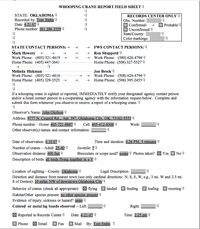 |
|
Meet
Tom Stehn Whooping Crane Coordinator, U.S. Fish and Wildlife Service |
As you read Tom's report this week . . .
- How does Tom explain why cranes migrate in small groups?
- What are the disadvantages of migrating in small groups?
- Do cranes ever migrate in larger groups?
- When do the majority of the whooping cranes depart Aransas on their journey north?
|
Dear Journey North, The first five of the 266 Whooping Cranes at Aransas (say Uh RAN Zus) left on migration March 25, and several others soon soon followed. The Lobstick adults with their twin chicks have apparently started migration sometime in the past week. They are almost always some of the earlier migrants. So somewhere, a group of 2+2 is en route. The unbanded family group that winters close to them has also started the migration. I plan to fly over the refuge to count the remaining cranes on April 10. Until then, you may recall that last week I asked you to think of reasons why it would be an advantage for whooping cranes to migrate in small groups. Did you think of these advantages and disadvantages? Advantages of Migrating in Small Groups Disadvantages
of Migrating in Small Groups
Each crane must be able to survive on its own. Fortunately, cranes can do this, and some young cranes will actually complete the migration on their own. They sometimes get help by joining up with sandhill cranes in flight or at a migration stopover site. Sometimes
Cranes Surprise Us
Heads
Up
|




